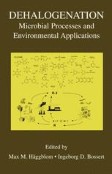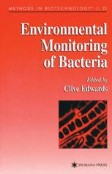Search
Search Results
-
Sulfur Cycling in Constructed Wetlands
Constructed wetlands (CWs) have been successfully employed in both mining and domestic wastewater applications, yet the fundamental processes...
-
Transformation Mechanisms of Major Nutrients and Metals in Wetlands
The three most important physicochemical properties of the soil that are affected by flooding are pH value, ionic strength, and oxidation-reduction...
-
Long-term fertilization regimes affect bacterial community structure and diversity of an agricultural soil in northern China
Background, Aims, and ScopeKnowledge about shifts of microbial community structure and diversity following different agricultural management...
-
Does evolution make the essence of biology?
The concept that all biological phenomena can be explained through evolution, by elucidating origin, is conventional. The concept of origin...
-
Organic compatible solutes of halotolerant and halophilic microorganisms
Microorganisms that adapt to moderate and high salt environments use a variety of solutes, organic and inorganic, to counter external osmotic...

-

-

-

-

-
Biodegradation of Atmospheric Halocarbons
Diverse aerobic and anaerobic microorganisms have the ability to degrade selected atmospheric halocarbons. In many cases, these degradative reactions...
-
Microbial Ecology of Dehalogenation
In reviewing the physicochemical factors and biological activities that describe the microbial ecology of an environment, in particular how it...
-
Use of Microautoradiography to Study in situ Physiology of Bacteria in Biofilms
Microautoradiography is a technique that enables direct detection of active bacteria in complex microbial systems on a single cell level. When...
-
Anaerobic Granular Sludge Bioreactor Technology
Anaerobic digestion is a mature wastewater treatment technology, with worldwide application. The predominantly applied bioreactor designs, such as...
-
Degradation and Transformation of Organic Bromine and Iodine Compounds: Comparison with their Chlorinated Analogues
An overview is given of the pathways for the degradation and transformation of selected brominated and iodinated aliphatic and aromatic compounds....
-
Contribution of molecular microbiology to the study in water pollution removal of microbial community dynamics
Molecular tools based on 16S rRNA geneidentification are revolutioning microbialecology. After a short presentation of theadvantages and drawbacks of...
-
Mikrobiologie der Vergärung von festen Abfallstoffen
Die Forderung nach hohen Abbauleistungen bei der Vergärung von biogenen organischen Feststoffen in möglichst kurzer Zeit, d.h. hohe Effizienz bzw....
-
Recovery and Analysis of Ribosomal RNA Sequences from the Environment
Since the 1980s the use of ribosomal RNA (rRNA) sequence-based analysis to characterize microbial populations (mainly bacterial and archaeal...
-
Molecular Analysis and Control of Activated Sludge
Activated sludge is a common biological treatment method for both industrial and domestic wastewaters. It is often used for the treatment of waste...
